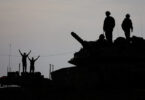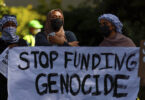Shahid Abbasi
The final official census figures reported in the different censuses from 1981 to 2017, have generated controversy and disagreement with regard to actual population of the Karachi city. The last census conducted in 2017 also met the same fate whereby almost all the parties of the province rejected the findings of the census. Unfortunately, the present digital census (2023), to the extent of Karachi city, is once again being made controversial from the start by certain political parties such as MQM & JI whose leaders are playing to the gallery.
The mainstream leaders of these two parties claim gross under-reporting in Karachi’s head count. For example, the representatives of political organizations claim that the city of Karachi is the biggest city of the world (population wise) with a population of over 30 million inhabitants. It is to mention that even with the reported population of 16.05 millions according to the 2017 census Karachi is the biggest city of the country as well as province. It constitutes almost 30% of the province’s total population.
The contention expressed by Karachi based political leaders representing primarily a major ethnic group projecting the city’s population more than 30 million population seems credulous. The claim is also contrary to the available facts and ground realities. The local and provincial leaders along with the citizens have the right to question the census results. However, such claim requires to be supported by the cogent evidences and objective statistical data lest it should only be treated as a propaganda having political motives and nefarious designs. It is also a reality that the issue of Karachi’s census has been used as a political tool by the political party of the city in past.
It appears that inflated number of population in Karachi makes it easier for the political parties to claim the ownership of the city. Moreover, these organizations also attempt to woo their voters that the urdu speaking population of city is deliberately and historically under-counted to suppress their political power. Interestingly, the groups alleging the under-counting of the due headcount in Karachi have so far not propounded any convincing justification to deny the statistical data being reported on different media.
There is need to understand that Karachi is now no more predominantly inhabited by Urdu-speaking people as it is presently home to diverse ethnic groups and communities. Further, the successive findings of the census and neutral observers establishes a major decrease in the percentage of the Urdu-speaking population over the last four decades. The final results of the 6th Population and Housing Census 2017 released by the Pakistan Bureau of Statistics (PBS) shows that out of Karachi’s total population of 16,024,894, urdu speaking populace has come out to be 6,779,142.
The population count pertaining to the period between the 1981 and 1998 and from 1998 till 2017 indicates a substantial decline in the proportion of Urdu speakers from 54.34 to 48.52 to 42.30 per cent reflecting the decline in the Urdu-speaking population by 12.04 percent. The steady decrese in the ratio of the Urdu-speaking population is result of demographic changes mainly caused by migration in past four decades. Thus, even if the methodological errors are corrected and the genuine grievances and the objections raised by the political parties on the issue are addressed, the rectification will not change the composition of Urdu speaking population.
Nevertheless, the determination of the exact and actual population of Karachi has become the need of the hour as to whether or not the city’s population exceeds 30 millions. The assertion requires deep introspection by the demography experts who may take into account the entire parameters such as birth rate, annual growth, density of the population, outflow, in-migration and out-migration and other relevant indicators to come up with the objective findings. The historical analysis of the growth pattern of the city since 1947 till date however, does not vindicate the assertion.
The in-depth analysis of the population growth of Karachi city transpires that the manageable city of Karachi having population of 450,000 people mainly Sindhi speaking, witnessed an unusual and tremendous growth in its population in the wake of the partition of India. The major mass influx of mainly urdu speaking Muslim refugees from India and their settlement in Karachi city after independence quadrupled the city’s population changing its demographic pattern and very character. Further, being the capital of Pakistan till 1958, Karachi also housed a big number of federal government officers and officials adding to the already thick population figures.
In its early years, labour class from up-country also migrated to the port city in search of employment. The city also attracted a substantial number of entrepreneurs and businessmen for commercial ventures. The economic growth rate and the congenial socio-economic environment during the development era of Ayub Khan also accelerated the settlement of outsiders in the city. Finally, Bhutto’s development projects in the city such as Steel Mills and the vacuum left by secession of East Pakistan also tempted many up-country inhabitants to Karachi.
At the same time, certain other factors contributed towards the growth of population in the city. For example, the government facilitated the re-settlement of the affected families of Mangla dam in Karachi. A significant number of Biharis from Bangladesh were also adjusted in the city.
The better education facilities, standard of living, civic amenities and higher level of urbanization also attracted the migration to the city. Thus, the city of Karachi witnessed unprecedented annual growth in its population from 1947 to 1980. However, such momentum was not possible to be continued for indefinite time. The growth of the population and character of the demography of Karachi city started to change from 1981 due to over-all different phenomenons.
The objective and empirical analysis will reveal that the annual growth of Karachi’s population since 1981 has slowed down for a variety of reasons. First, the diminishing natural child birth rate across the country and lower family size has limited the in-migration of surplus labour to this city. Considering the education and income level of urdu speaking population of Karachi, the average family size in Karachi is even lesser. The family planning, late marriages and educational attainment has also stalled the growth rate in the city.
The trend of immigration to foreign and perpetual brain drain of Urdu speaking youth from Pakistan also reduces the growth of overall population. Moreover, Karachi could not keep up with the pace of industrial expansion as the other cities of the country also started to develop after partition. Cities such as Lahore, Faisalabad, Multan, Peshawer, Islamabad and Quetta also emerged on the scene. Above all, the emergence of MQM on Karachi’s political scene during 1980’s put a brake on the traditional growth pattern of the city. The precarious law and order situation, frequent turbulence, mass killings, strikes, ethnic and lingual riots crippled the city’s progress. The arrival of Afghan refugees during the same decade added to the crime scene. The political turmoil resulted in the collapse of civic amenities. The dream city of Karachi lost its attraction. The policy makers, businessmen, general public also found other alternatives.
The establishment of dry ports in various cities of Punjab including Peshawer and Quetta neutralized the importance of Karachi as a port city. The accelerated industrialization in Punjab and undertaking mega projects in upper country created enormous job opportunities. Moreover, the planned growth of the cities such as Lahore and better livelihood conditions mainly in Punjab stopped the migration of Punjabis to Karachi. Similarly, the respective governments in provinces of KPK also paid attention to the city of Peshawer by providing urban facilities. The borders and customs points were opened in KPK & Balochistan which made a way for enormous trading opportunities for the locals. In the meantime, Islamabad also appeared as a modern and developing city attracting the settlements from Punjab and KPK.
It is not difficult to understand that the a city hit by turbulent politics and characterized by violence, fear, terrorism, killings and extortions cannot flourish. Moreover, the bad governance, corruption, unemployment as well as crises related to water, electricity, sewage and public transport do not encourage settlements nor investments. The prospective migrants and the investors abandoned preferring Karachi as their first choice city. The role of media projecting Karachi as one of the poor governed city and bereft of infrastructure and civic facilities also retarded the growth of city.
The migration to the city also nosedived due to the spoiling of the earlier image of Karacbi being the most urbanized and clean city offering the better education and health facilities. It can be safely assumed that Karachi has failed to maintain its rate of economic growth as well as standings in literacy and educational attainment. The better social indicators in cities like Lahore in terms of infrastructure, water supply, housing and amenities, electricity and gas supply, and sewage facilities has led to the out-migration of Punjabis from Karachi to the cities of Punjab.
The earlier migration bursts and major influx effected for seeking jobs in factories like Steel Mills, for setting up of businesses, resettlement of land, and other such ventures rising the population of city have not taken place. Though the limited migration from rural areas to the city is taking place however, it constitutes a little fraction. It cannot be equated with the earlier population bursts. Thus, it will be in the fitness of things, that all the stakeholders including the local and provincial political parties such as MQM, JI, PPP along with the representatives of civic society and netural observers should accept the new realities viz a viz Karachi’s population. The political parties may stop playing to the gallery for the preference of party interests and to appease the voters who have been misled to believe that Karachi’s population is more than 30 millions.
There may be a certain degree under-counting of the people which may be brought to the notice of the authorities along with the evidences so that every individual residing in the city is counted. The under-statement in the over-all population headcount due to non-accountal of the people who are in transit to the city may also be evaluated properly. It is believed that a substantial number of people though not actual residents of the city, come and live in the city for few days for different purposes such as taking delivery of the goods, business meetings, official trips, pleasure visits, meetings etc. A significant number of illegal immigrants who have obtained the fake residency documents also amplify the number of population.
From above facts, it can be summarized that undue political scoring on the issue of census in Karachi is not in interest of the city and the province. Therefore, the federal government should ensure appropriate, accurate and transparent registration of demographic data in the current 2023 digital census. However, it is also imperative that the unverified population statistics, un-necessary extrapolations of the population figures and its self projection may be avoided. Above all, the political representatives may be cautious to present the unvindicated figures which mislead the people and trigger conflict.
The government should also strive to engage with the politicians to resolve the long standing issue of actual and exact population of Karachi on the basis of the objectivity and evidential data. The true and fair determination of Karachi’s population will put an end to the hypothetical figures. The objective findings and results of the population census may be accepted by all the political stakeholders and may not be subjugated to the politics of any political party.







